Veterans...Get the hell in here now!
- Thread starter 6ohMax
- Start date
BarnBuster
Virtually Unknown Member
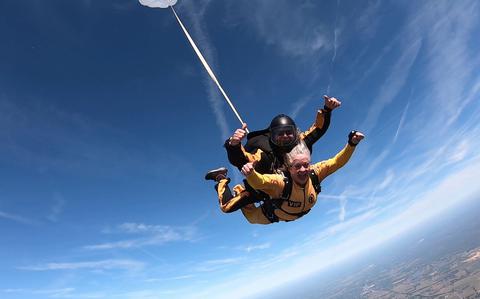
'I feel like I’m with him': Gold Star mothers skydive in memory of their sons
Two Gold Star mothers experienced a slice of their sons’ best moments, courtesy of Special Operations Command’s elite parachute demonstration team.
BarnBuster
Virtually Unknown Member
Today in Military History:
"In Appomattox Court House, Virginia, on April 9, 1865, Robert E. Lee surrenders his 28,000 Confederate troops to Union General Ulysses S. Grant, effectively ending the American Civil War. Forced to abandon the Confederate capital of Richmond, blocked from joining the surviving Confederate force in North Carolina, and harassed constantly by Union cavalry, Lee had no other option.
In retreating from the Union army’s Appomattox Campaign, the Army of Northern Virginia had stumbled through the Virginia countryside stripped of food and supplies. At one point, Union cavalry forces under General Philip Sheridan had actually outrun Lee’s army, blocking their retreat and taking 6,000 prisoners at Sayler’s Creek. Desertions were mounting daily, and by April 8 the Confederates were surrounded with no possibility of escape. On April 9, Lee sent a message to Grant announcing his willingness to surrender. The two generals met in the parlor of the Wilmer McLean home at one o’clock in the afternoon.
Lee and Grant, both holding the highest rank in their respective armies, had known each other slightly during the Mexican War and exchanged awkward personal inquiries. Characteristically, Grant arrived in his muddy field uniform while Lee had turned out in full dress attire, complete with sash and sword. Lee asked for the terms, and Grant hurriedly wrote them out. All officers and men were to be pardoned, and they would be sent home with their private property–most important, the horses, which could be used for a late spring planting. Officers would keep their side arms, and Lee’s starving men would be given Union rations.
Shushing a band that had begun to play in celebration, General Grant told his officers, “The war is over. The Rebels are our countrymen again.” Although scattered resistance continued for several weeks, for all practical purposes the Civil War had come to an end."
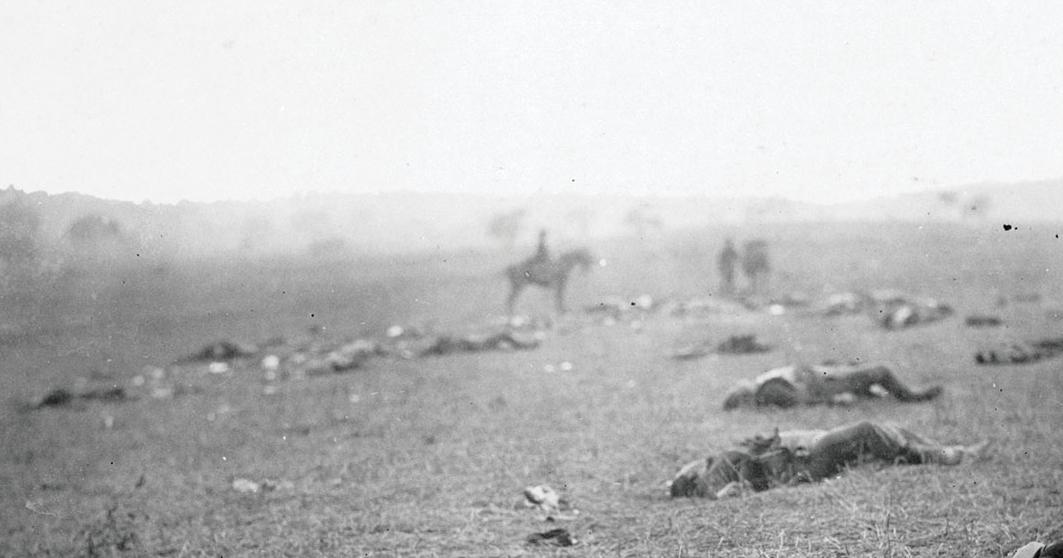
 www.battlefields.org
www.battlefields.org
"In Appomattox Court House, Virginia, on April 9, 1865, Robert E. Lee surrenders his 28,000 Confederate troops to Union General Ulysses S. Grant, effectively ending the American Civil War. Forced to abandon the Confederate capital of Richmond, blocked from joining the surviving Confederate force in North Carolina, and harassed constantly by Union cavalry, Lee had no other option.
In retreating from the Union army’s Appomattox Campaign, the Army of Northern Virginia had stumbled through the Virginia countryside stripped of food and supplies. At one point, Union cavalry forces under General Philip Sheridan had actually outrun Lee’s army, blocking their retreat and taking 6,000 prisoners at Sayler’s Creek. Desertions were mounting daily, and by April 8 the Confederates were surrounded with no possibility of escape. On April 9, Lee sent a message to Grant announcing his willingness to surrender. The two generals met in the parlor of the Wilmer McLean home at one o’clock in the afternoon.
Lee and Grant, both holding the highest rank in their respective armies, had known each other slightly during the Mexican War and exchanged awkward personal inquiries. Characteristically, Grant arrived in his muddy field uniform while Lee had turned out in full dress attire, complete with sash and sword. Lee asked for the terms, and Grant hurriedly wrote them out. All officers and men were to be pardoned, and they would be sent home with their private property–most important, the horses, which could be used for a late spring planting. Officers would keep their side arms, and Lee’s starving men would be given Union rations.
Shushing a band that had begun to play in celebration, General Grant told his officers, “The war is over. The Rebels are our countrymen again.” Although scattered resistance continued for several weeks, for all practical purposes the Civil War had come to an end."

Civil War Casualties
Roughly 2% of the population, an estimated 620,000 men, lost their lives in the line of duty during the Civil War. Taken as a percentage of today's population, the toll would have risen as high as 6 million souls.
BarnBuster
Virtually Unknown Member
Singlemalt
Well-Known Member
I remember that on the evening news
smokinrav
Well-Known Member
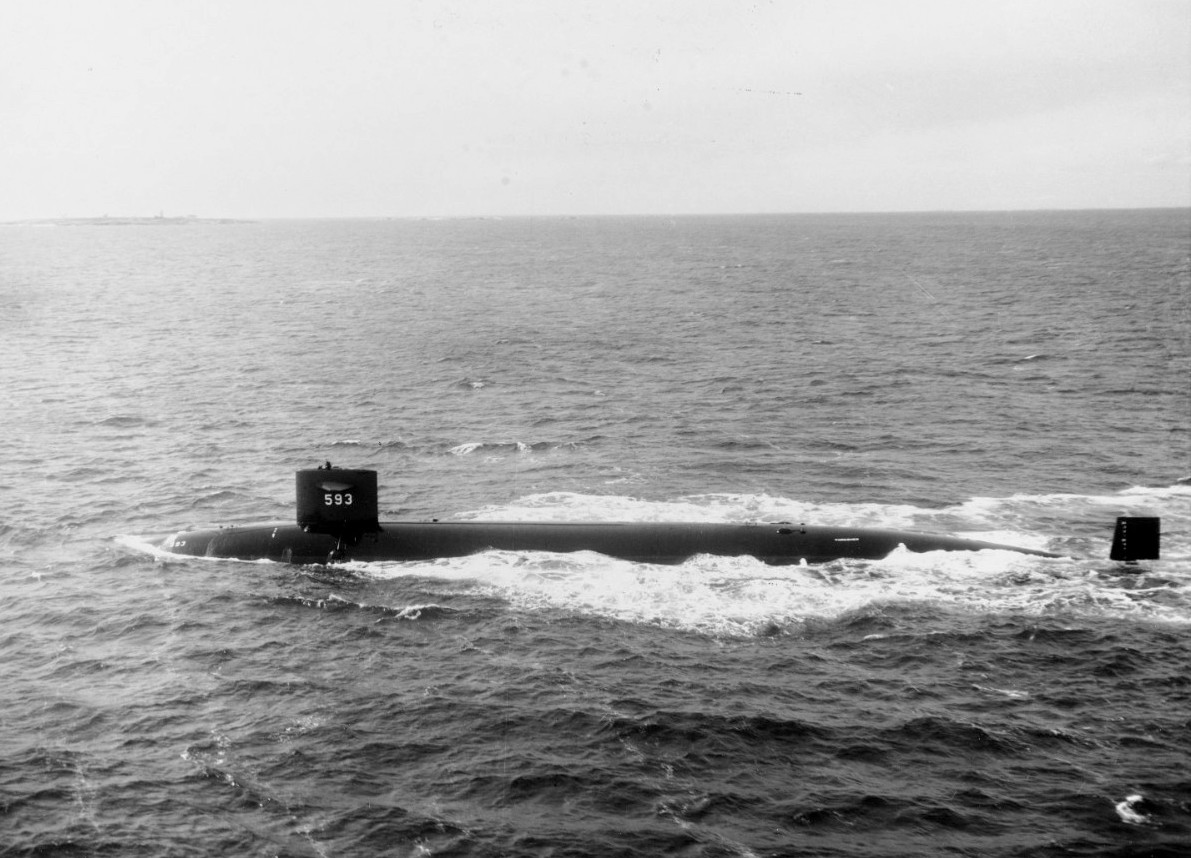
Panel: 'Navy Has Done Itself a Major Favor' in Releasing Thresher Investigation - USNI News
The rolling release of a previously secret report and investigation of the 1963 loss of USS Thresher (SSN-593), the Navy’s worst submarine disaster, is providing new lessons for today’s sailors and shipbuilders, said the former submarine commander who brought suit to declassify the documents...
cannabineer
Ursus marijanus
When I was nine, a friend of my parents was moving back to Germany. She gave them a stack of National Geographic, 1963 to 1970. They gave them to me. I remember the very first article I read was about the loss of 593.I remember that on the evening news
It was months before I found the pictorial feature on some Amazon tribe that was still almost pristine. They wore a belt of some sort.
ROFLMAO you were a bit slowWhen I was nine, a friend of my parents was moving back to Germany. She gave them a stack of National Geographic, 1963 to 1970. They gave them to me. I remember the very first article I read was about the loss of 593.
It was months before I found the pictorial feature on some Amazon tribe that was still almost pristine. They wore a belt of some sort.
BarnBuster
Virtually Unknown Member

'I'm Very Proud of Him:' Sergeant Major of the Army Reacts to Black Lieutenant's Traffic Stop
"He represented himself and our Army well through his calm, professional response to the situation -- I'm very proud of him."

Virginia Attorney General Investigating Windsor Police Department
The Attorney General's office requested documents on the department's use of force policies and personnel records for the officers who pepper-sprayed Lt. Caron Nazario Dec. 5.
DarkWeb
Well-Known Member
I saw that last night on the news.
'I'm Very Proud of Him:' Sergeant Major of the Army Reacts to Black Lieutenant's Traffic Stop
"He represented himself and our Army well through his calm, professional response to the situation -- I'm very proud of him."www.military.com

Virginia Attorney General Investigating Windsor Police Department
The Attorney General's office requested documents on the department's use of force policies and personnel records for the officers who pepper-sprayed Lt. Caron Nazario Dec. 5.www.npr.org
"You're getting ready to ride the lightning"I saw that last night on the news.
Seriously?!?
Fuckin fat punk with a utility belt & tin badge.
DarkWeb
Well-Known Member
The cop at the back of the suv looks very green....like first week green."You're getting ready to ride the lightning"
Seriously?!?
Fuckin fat punk with a utility belt & tin badge.
Singlemalt
Well-Known Member
High School greenThe cop at the back of the suv looks very green....like first week green.
As a qualified Engineering Officer of the Watch we had to know the location and function of every control panel, valve & piping system on the entire vessel.
doublejj
Well-Known Member
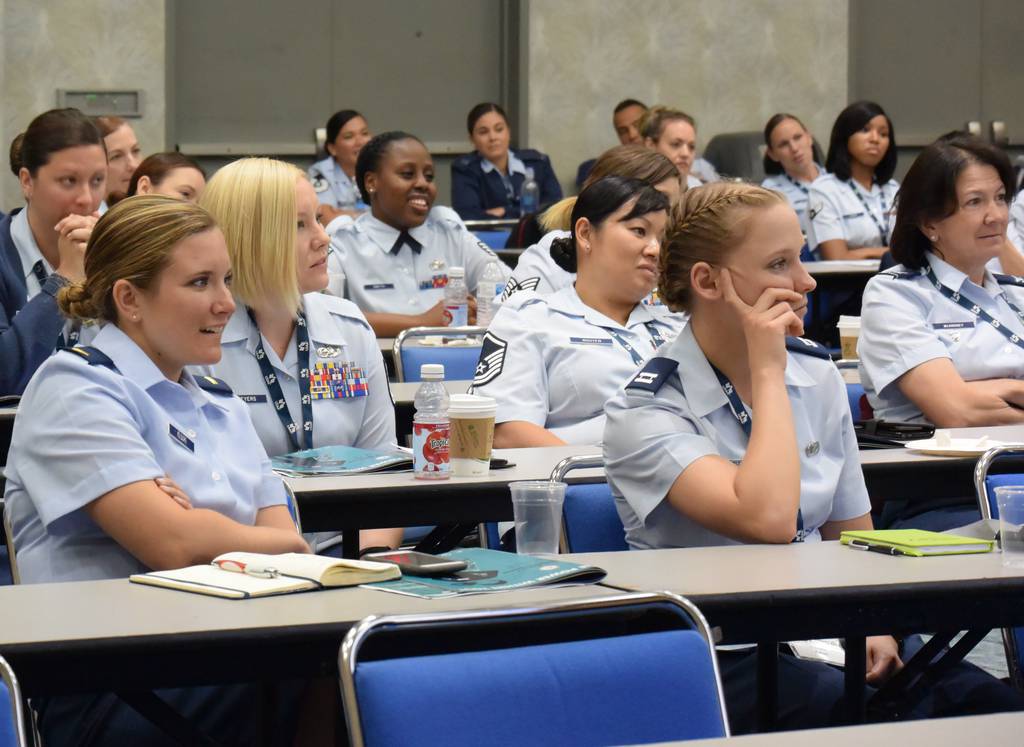
‘Pink tax’ on women’s military uniform items would be eliminated under new proposal
The move follows reports that women pay thousands more in uniform costs over their careers than their male counterparts.

BarnBuster
Virtually Unknown Member
Today in Military History:
On April 18, 1942, 16 American B-25 bombers, launched from the aircraft carrier USS Hornet 650 miles east of Japan and commanded by Lieutenant Colonel James H. Doolittle, attack the Japanese mainland.
The now-famous Tokyo Raid did little real damage to Japan (wartime Premier Hideki Tojo was inspecting military bases during the raid; one B-25 came so close, Tojo could see the pilot, though the American bomber never fired a shot)–but it did hurt the Japanese government’s prestige. Believing the air raid had been launched from Midway Island, approval was given to Admiral Isoroku Yamamoto’s plans for an attack on Midway–which would also damage Japanese “prestige.” Doolittle eventually received the Medal of Honor.
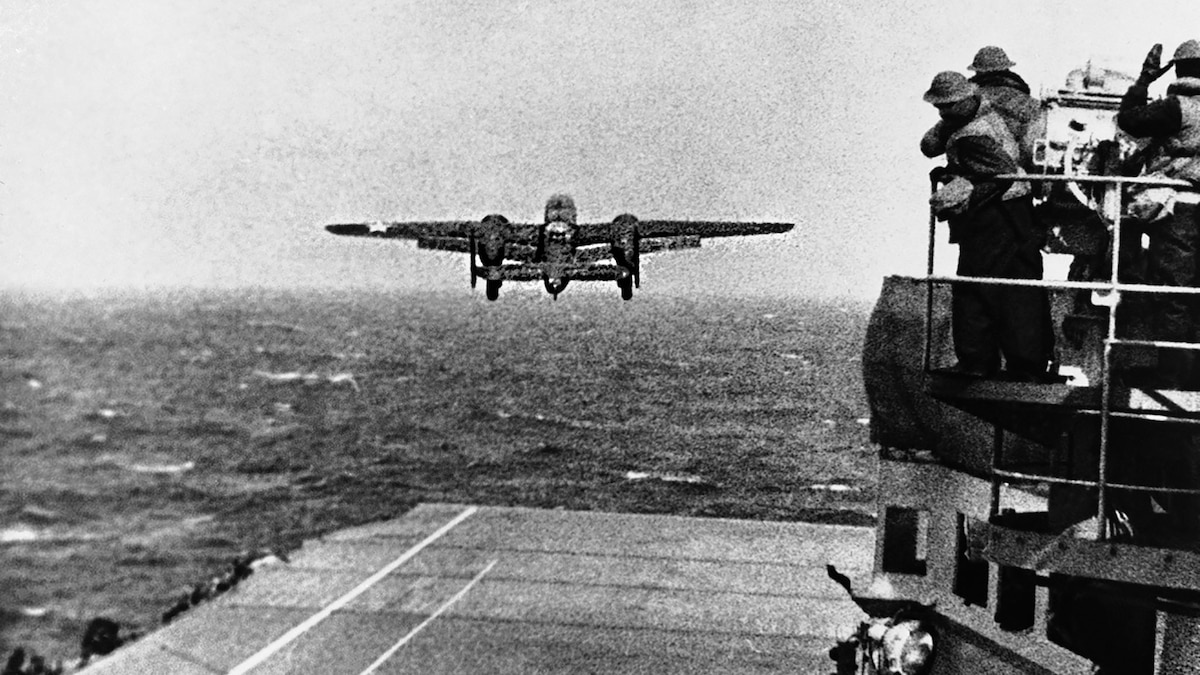
 www.nationalgeographic.com
www.nationalgeographic.com
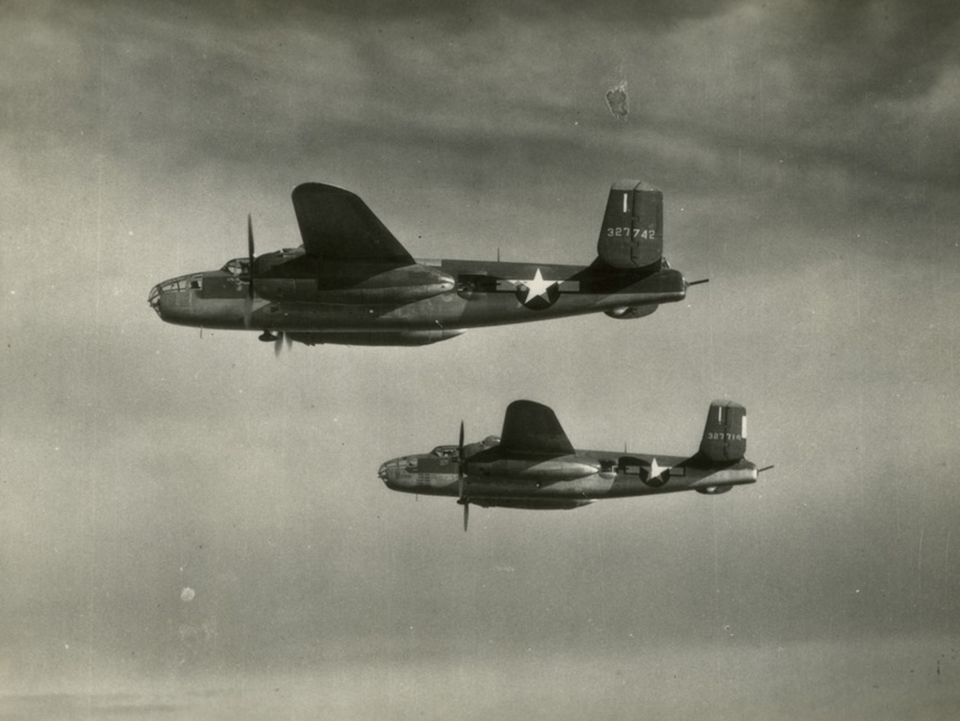
 www.nationalww2museum.org
www.nationalww2museum.org
On April 18, 1942, 16 American B-25 bombers, launched from the aircraft carrier USS Hornet 650 miles east of Japan and commanded by Lieutenant Colonel James H. Doolittle, attack the Japanese mainland.
The now-famous Tokyo Raid did little real damage to Japan (wartime Premier Hideki Tojo was inspecting military bases during the raid; one B-25 came so close, Tojo could see the pilot, though the American bomber never fired a shot)–but it did hurt the Japanese government’s prestige. Believing the air raid had been launched from Midway Island, approval was given to Admiral Isoroku Yamamoto’s plans for an attack on Midway–which would also damage Japanese “prestige.” Doolittle eventually received the Medal of Honor.

Trained in Secret, These Fearless Pilots Retaliated for Pearl Harbor
On April 18, 1942, Jimmy Doolittle led a squadron on one of the most daring missions of World War II.

Doolittle's Raider: The North American B-25 Mitchell | The National WWII Museum | New Orleans
The first bomber to hit Japan after Pearl Harbor, the B-25 Mitchell was found in every theater of the war and was a rugged, multipurpose bomber beloved by her aircrew for its survivability and ease to fly.








